Strategies and Tactics
STRATEGY 1.1: Collaborate with University partners to offer a seamless array of learning and research services.
- TACTIC 1.1.1 -- Complete the first phase transformation of the first floor of Richter Library into a Learning Commons -- a collaborative service and learning space for the Libraries and partners.
- TACTIC 1.1.2 -- Complete planning of the second phase transformation of the first floor of Richter Library into a Learning Commons.
- TACTIC 1.1.3 -- Improve student experience of academic services by integrating new partners into the Learning Commons as needed.
- TACTIC 1.1.4 -- Amplify the Learning Commons' impact throughout the Libraries and in other settings when possible.
- TACTIC 1.1.5 -- Raise the visibility of the Learning Commons nationally and internationally by presenting at national conferences and venues about the work of the Learning Commons.
TACTIC 1.1.1
Captures the broader objectives of improving educational infrastructure, fostering innovation, and contributing to sustainable communities.
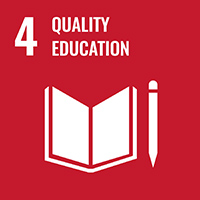 |
Goal 4: Quality Education Creating the Learning Commons supports the goal of providing quality education by creating a conducive environment for student learning and success. |
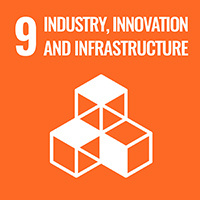 |
Goal 9: Industry, Innovation, and Infrastructure The creation of the Learning Commons involves infrastructure development to enhance academic services, aligning with the goal of promoting innovation and infrastructure. |
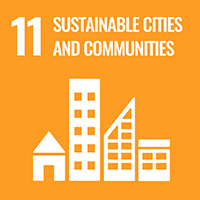 |
Goal 11: Sustainable Cities and Communities Creating a Learning Commons within the library contributes to building sustainable and inclusive communities by providing a space that supports student learning and academic services. |
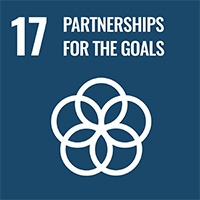 |
Goal 17: Partnerships for the Goals The coordination and enhancement of academic services involves collaboration and partnerships among various stakeholders, aligning with the goal of fostering partnerships for sustainable development. |
TACTIC 1.1.2
Captures the broader objectives of improving educational infrastructure, fostering innovation, and contributing to sustainable communities.
 |
Goal 4: Quality Education Creating the Learning Commons supports the goal of providing quality education by creating a conducive environment for student learning and success. |
 |
Goal 9: Industry, Innovation, and Infrastructure The creation of the Learning Commons involves infrastructure development to enhance academic services, aligning with the goal of promoting innovation and infrastructure. |
 |
Goal 11: Sustainable Cities and Communities Creating a Learning Commons within the library contributes to building sustainable and inclusive communities by providing a space that supports student learning and academic services. |
 |
Goal 17: Partnerships for the Goals The coordination and enhancement of academic services involve collaboration and partnerships among various stakeholders, aligning with the goal of fostering partnerships for sustainable development. |
TACTIC 1.1.3
Reflects a commitment to enhancing the quality of education, building partnerships, and contributing to the development of sustainable and inclusive communities.
 |
Goal 4: Quality Education Enhancing the student experience of academic services contributes to the broader goal of providing quality education and creating a conducive learning environment. |
 |
Goal 9: Industry, Innovation, and Infrastructure The integration of new partners involves innovative approaches and infrastructure enhancements within the Learning Commons, supporting the goal of promoting innovation and infrastructure. |
 |
Goal 11: Sustainable Cities and Communities Improving the student experience within the Learning Commons contributes to building sustainable and inclusive communities by ensuring that educational services are accessible, supportive, and responsive to student needs. |
 |
Goal 17: Partnerships for the Goals Integrating new partners into the Learning Commons involves fostering collaborations and partnerships to enhance the overall effectiveness of academic services, aligning with the goal of promoting partnerships for sustainable development. |
TACTIC 1.1.4
Emphasizes the importance of extending the positive effects of educational services provided by the Learning Commons beyond its immediate setting, promoting innovation, and fostering partnerships for sustainable development.
 |
Goal 4: Quality Education Amplifying the impact of the Learning Commons contributes to the broader goal of providing quality education by extending its positive effects on student learning and success. |
 |
Goal 17: Partnerships for the Goals Collaborating with other libraries and settings reflects a commitment to partnerships for sustainable development, as it involves working together to achieve common educational and developmental objectives. |
TACTIC 1.1.5
Reflects a commitment to sharing knowledge, fostering partnerships, and contributing to the global discourse on educational practices and innovations.
 |
Goal 4: Quality Education BHighlighting the work of the Learning Commons at national and international conferences contributes to the broader goal of promoting quality education and sharing best practices. |
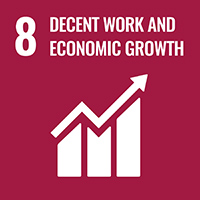 |
Goal 8: Decent Work and Economic Growth Presenting the work of the Learning Commons may provide opportunities for collaboration and economic growth within the academic and educational sectors. |
 |
Goal 9: Industry, Innovation, and Infrastructure The visibility and recognition of the Learning Commons contribute to the promotion of innovation and infrastructure development within the education sector. |
 |
Goal 17: Partnerships for the Goals Presenting at conferences involves collaboration and knowledge-sharing, aligning with the goal of fostering partnerships for sustainable development on a national and international scale. |
STRATEGY 1.2: Promote peer-to-peer learning.
- TACTIC 1.2.1 -- Provide increased access to emerging technologies and equipment for check-out in Creative Studio in multiple locations in the University Libraries.
- TACTIC 1.2.2 -- Serve as a service hub for extended reality (XR) and other artificial intelligence technologies.
- TACTIC 1.2.3 -- Develop Library Research Scholars Program and Adobe Scholars Program to give students more opportunities to develop research and creative projects that are outside of the traditional curriculum.
- TACTIC 1.2.4 -- Launch Peer Research Consultants' program to deliver peer-to-peer research services for undergraduates in the Learning Commons' Consultation Zone.
- TACTIC 1.2.5 -- Explore collaborations with campus and outside partners around student mental health.
TACTIC 1.2.1
Reflects a commitment to improving educational resources, fostering innovation, and promoting equitable access to technology across diverse communities within the university setting.
 |
Goal 4: Quality Education Providing increased access to emerging technologies supports the goal of quality education by offering students opportunities to engage with innovative tools and equipment. |
 |
Goal 9: Industry, Innovation, and Infrastructure Offering access to emerging technologies aligns with the goal of promoting innovation and ensuring access to modern infrastructure and technologies. |
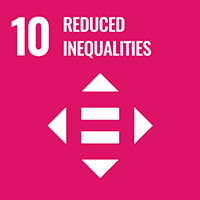 |
Goal 10: Reduced Inequalities Providing equitable access to emerging technologies contributes to reducing inequality by ensuring that students across multiple campus locations have equal opportunities to utilize advanced tools and equipment. |
 |
Goal 11: Sustainable Cities and Communities Making emerging technologies available in multiple locations within the University libraries supports the creation of sustainable and inclusive communities by enhancing educational resources and opportunities. |
TACTIC 1.2.2
Reflects a commitment to advancing technology, promoting innovation, and supporting education and economic growth through the integration of extended reality and artificial intelligence technologies.
 |
Goal 4: Quality Education Serving as a hub for extended reality (XR) and artificial intelligence (AI) technologies can contribute to quality education by providing access to cutting-edge tools that enhance learning experiences. |
 |
Goal 8: Decent Work and Economic Growth Fostering expertise and services related to XR and AI can contribute to economic growth by supporting industries and creating opportunities for skilled employment. |
 |
Goal 9: Industry, Innovation, and Infrastructure Acting as a service hub for XR and AI technologies aligns with the goal of promoting innovation and developing infrastructure to support advanced technologies. |
TACTIC 1.2.3
Reflects a commitment to enhancing educational opportunities, fostering innovation, and promoting partnerships to support students in developing valuable skills beyond the conventional academic framework.
 |
Goal 4: Quality Education Creating programs that provide students with opportunities for research and creative projects contributes to the goal of quality education by fostering a more engaging and enriched learning experience. |
 |
Goal 8: Decent Work and Economic Growth Providing students with opportunities to engage in research and creative projects outside the traditional curriculum can contribute to skill development and future economic opportunities. |
 |
Goal 9: Industry, Innovation, and Infrastructure Developing programs like the Library Research Scholars Program and Adobe Scholars Program aligns with the goal of promoting innovation and creating supportive infrastructure for students to explore projects beyond the traditional curriculum. |
 |
Goal 17: Partnerships for the Goals Establishing these programs involves collaboration and partnerships between the library, academic institutions, and potentially external partners like Adobe, supporting the goal of fostering partnerships for sustainable development. |
TACTIC 1.2.4
Reflects a commitment to enhancing educational resources, fostering innovation, and promoting collaborative partnerships to support undergraduates in their research activities.
 |
Goal 4: Quality Education Launching a Peer Research Consultants program supports the goal of quality education by providing students with additional resources and support for research skills, contributing to a more enriched learning experience. |
 |
Goal 8: Decent Work and Economic Growth Providing opportunities for students to serve as Peer Research Consultants contributes to the goal of decent work by offering valuable work experience and skill development within the academic context. |
 |
Goal 9: Industry, Innovation, and Infrastructure Implementing a program that involves peer-to-peer research services reflects a commitment to innovation in educational support services, aligning with the goal of promoting innovation and developing efficient infrastructure for student success. |
 |
Goal 17: Partnerships for the Goals Collaborating with peer consultants and implementing the program in the Learning Commons involves partnerships, fostering a collaborative approach to supporting undergraduates in their research endeavors. |
TACTIC 1.2.5
Reflects a commitment to improving mental health, fostering partnerships for sustainable development, and creating inclusive spaces that prioritize the well-being of individuals.
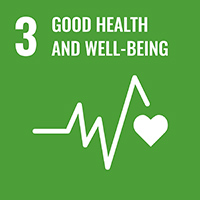 |
Goal 3: Good Health and Well-Being Exploring collaborations around mental health directly contributes to the goal of promoting good health and well-being by addressing mental health challenges and fostering supportive resources. |
 |
Goal 8: Decent Work and Economic Growth Mental health initiatives can contribute to the goal of decent work by creating supportive environments that enhance the well-being and productivity of individuals within the campus and broader community. |
 |
Goal 11: Sustainable Cities and Communities Addressing mental health through collaborations contributes to creating sustainable and inclusive communities by prioritizing the mental well-being of individuals and fostering a supportive environment. |
 |
Goal 17: Partnerships for the Goals Collaborating with campus and outside partners reflects a commitment to partnerships for sustainable development, ensuring a comprehensive and coordinated approach to mental health initiatives. |
STRATEGY 1.3: Strengthen and promote the Libraries' teaching role.
- TACTIC 1.3.1 -- Leverage the Liaison Librarian Council to develop a coordinated strategy across the Libraries to promote the expertise of librarians and the suite of services they offer, i.e., personalized consultations, customized workshops, and on-demand instructional sessions.
- TACTIC 1.3.2 -- Develop methods and processes for evaluating the qualitative impact of librarians' teaching efforts on learning.
- TACTIC 1.3.3 -- Revise core job description for liaison librarian work to align with findings of "Conversation Project" — a qualitative assessment of faculty research and teaching needs.
- TACTIC 1.3.4 -- Hire a student success librarian to develop our approach to the first-year student experience with strong ties to the academic curriculum.
TACTIC 1.3.1
Reflects a commitment to enhancing educational resources, fostering innovation, and promoting partnerships for the effective delivery of library services.
 |
Goal 4: Quality Education Promoting the expertise of librarians and their services contributes to the goal of quality education by ensuring that students and the academic community have access to valuable resources and support. |
 |
Goal 8: Decent Work and Economic Growth Promoting the suite of services offered by librarians, including personalized consultations and instructional sessions, supports the goal of decent work by highlighting the valuable contributions of library professionals. |
 |
Goal 9: Industry, Innovation, and Infrastructure Developing a coordinated strategy for promoting librarian expertise aligns with the goal of promoting innovation and creating efficient infrastructure for delivering educational services. |
 |
Goal 17: Partnerships for the Goals Leveraging the Liaison Librarian Council involves collaboration and coordination, fostering partnerships that ensure a unified approach to promoting library services. |
TACTIC 1.3.2
Reflects a commitment to improving the quality of education, fostering innovation in assessment methods, and promoting collaborations for continuous improvement in teaching practices.
 |
Goal 3: Good Health and Well-Being Effective teaching contributes to the well-being of students by promoting a positive learning environment and enhancing their educational experiences. |
 |
Goal 4: Quality Education Developing methods for evaluating the impact of librarians' teaching efforts supports the goal of quality education by ensuring that teaching practices contribute effectively to student learning outcomes. |
 |
Goal 9: Industry, Innovation, and Infrastructure Developing innovative evaluation methods align with the goal of promoting innovation and creating efficient infrastructure for assessing the impact of teaching efforts. |
TACTIC 1.3.3
Reflects a commitment to improving educational resources, fostering innovation, and promoting partnerships for the effective delivery of library services tailored to the specific needs of faculty members.
 |
Goal 4: Quality Education Aligning liaison librarian work with the findings of a qualitative assessment ensures that the educational services provided are tailored to meet the faculty's specific research and teaching needs, contributing to quality education. |
 |
Goal 8: Decent Work and Economic Growth Adapting the core job description to align with faculty needs supports the goal of decent work by ensuring that liaison librarians are equipped to provide valuable and relevant services in support of faculty research and teaching. |
 |
Goal 9: Industry, Innovation, and Infrastructure Revising the core job description based on qualitative assessment findings reflects a commitment to innovation in educational services and contributes to the development of efficient infrastructure to support faculty needs. |
 |
Goal 17: Partnerships for the Goals Alignment with assessment findings involves collaboration and partnerships with faculty members, ensuring that liaison librarians are responsive to the evolving needs of the academic community. |
TACTIC 1.3.4
Reflects a commitment to improving the quality of education, fostering innovation in student support services, and promoting partnerships for a holistic approach to the first-year student experience.
 |
Goal 4: Quality Education Hiring a student success librarian to enhance the first-year student experience contributes to the goal of quality education by providing targeted support and resources for students transitioning into higher education. |
 |
Goal 8: Decent Work and Economic Growth Hiring a student success librarian is an investment in creating a role that supports student success and contributing to the goal of decent work by providing employment opportunities that align with educational goals. |
 |
Goal 9: Industry, Innovation, and Infrastructure Developing an approach with strong ties to the academic curriculum reflects a commitment to innovation in educational services, aligning with the goal of promoting innovation and creating efficient infrastructure for student success. |
 |
Goal 17: Partnerships for the Goals Collaborating with a student success librarian involves partnerships within the academic community, fostering a coordinated approach to supporting first-year students and ensuring a smoother transition into university life. |
STRATEGY 1.4: Become a cross-disciplinary hub across the University and on each campus for fostering learning, creating, health, and well-being.
- TACTIC 1.4.1 -- Integrate librarians and align library liaison work with the University's Roadmap to Our New Century interdisciplinary initiatives (like U-LINK teams) through engagement with key leadership in Office of Research.
- TACTIC 1.4.2 -- Librarian Representation on Campus and/or Organization Committees.
- TACTIC 1.4.3 -- Develop and implement mindfulness programs and resources for the community, in collaboration with Mindfulness-in-Law Program, that complement similar offerings in Lowe Art Museum.
- TACTIC 1.4.4 -- Programming to Highlight DEAI, Mental Health, and Social Justice
- TACTIC 1.4.5 -- Improving Community Well-being
TACTIC 1.4.1
Reflects a commitment to advancing research, fostering innovation, and promoting partnerships for sustainable development within the academic and research context.
 |
Goal 3: Good Health and Well-Being Research initiatives supported by integrated library services can contribute to good health and well-being by advancing knowledge and solutions in health-related fields. |
 |
Goal 4: Quality Education Integrating librarians and aligning library liaison work with interdisciplinary initiatives supports the goal of quality education by enhancing research support services and resources for academic and research communities. |
 |
Goal 9: Industry, Innovation, and Infrastructure Collaborating with interdisciplinary initiatives reflects a commitment to innovation in library services and aligns with the goal of promoting innovation and efficient infrastructure for research and education. |
 |
Goal 17: Partnerships for the Goals Engaging with key leadership in the Office of Research and aligning with interdisciplinary initiatives involves partnerships, fostering a collaborative approach to supporting research and academic goals. |
TACTIC 1.4.2
Demonstrates a commitment to promoting quality education, reducing inequalities, enhancing institutional governance, and fostering partnerships. Additionally, it underscores the importance of inclusive and representative decision-making processes that leverage diverse expertise and perspectives within the academic community.
 |
Goal 4: Quality Education Supports quality education by ensuring that the expertise and perspectives of librarians are included in discussions and decisions related to educational resources, curriculum development, and information literacy initiatives. This helps to integrate library services and resources more effectively into the broader educational mission of the institution. |
 |
Goal 10: Reduced Inequalities Promotes reduced inequalities by ensuring diverse voices and perspectives are represented in decision-making processes. Librarians often advocate for equitable access to information and resources, and their involvement can help address and reduce disparities in access to educational materials and support services. |
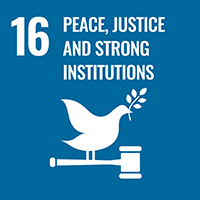 |
Goal 16: Peace, Justice, and Strong Institutions Promotes transparency, inclusivity, and fairness in institutional governance and decision-making processes. |
 |
Goal 17: Partnerships for the Goals Fosters partnerships and collaboration across different departments and units within the organization. By bringing their expertise in information management, research support, and digital literacy, librarians can contribute to the achievement of institutional goals and foster a collaborative environment that leverages diverse skill sets and knowledge bases. |
TACTIC 1.4.3
Reflects a holistic and collaborative approach to fostering well-being, recognizing the importance of mental health, partnerships, and cultural integration within the community.
 |
Goal 3: Good Health and Well-Being This goal directly contributes to promoting good health and well-being by providing mindfulness programs and resources that support mental and emotional well-being within the community. |
 |
Goal 11: Sustainable Cities and Communities Creating mindfulness programs for the community contributes to creating sustainable and inclusive communities by prioritizing mental well-being and offering resources for stress reduction and relaxation. |
 |
Goal 17: Partnerships for the Goals Collaborating with the Mindfulness-in-Law Program and complementing offerings in Lowe Art Museum involves partnerships, fostering a collaborative approach to supporting well-being through mindfulness initiatives. |
TACTIC 1.4.4
Demonstrates a commitment to promoting health, education, inclusivity, and social justice. Additionally, it underscores the importance of creating a supportive and equitable environment where all can thrive and actively engage in meaningful discussions and actions toward a more just and inclusive society.
 |
Goal 3: Good Health and Well-Being Contributes to promoting well-being. By raising awareness, reducing stigma, and providing resources and support, these programs can improve mental health outcomes and enhance the community's overall well-being. |
 |
Goal 4: Quality Education Enhances educational experiences by promoting understanding, tolerance, and respect for diversity. |
 |
Goal 10: Reduced Inequalities Addresses inequalities by fostering an inclusive environment where diversity is celebrated, and equity is prioritized. These initiatives help to raise awareness about systemic inequalities and encourage actions to reduce disparities within the community. |
TACTIC 1.4.5
Reflects a holistic approach to fostering healthy, resilient, and inclusive communities.
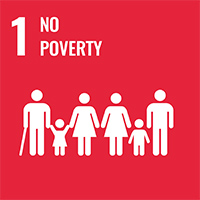 |
Goal 1: No Poverty Contributes to reducing poverty by addressing underlying social determinants of health and well-being, such as access to education, healthcare, affordable housing, and economic opportunities. |
 |
Goal 4: Quality Education Empower individuals with knowledge and skills to make informed decisions about their health, livelihoods, and overall well-being. Access to quality education can also help address disparities in health outcomes and socioeconomic status. |
 |
Goal 11: Sustainable Cities and Communities Creating environments that support community well-being is essential for building sustainable cities and communities. |
STRATEGY 1.5: Deliver services at point of need.
- TACTIC 1.5.1 -- Offer library-to-library delivery services (instead of U.S. or University mail) to all three campuses.
- TACTIC 1.5.2 -- Implement the Textbook Affordability Project pilot in partnership with the Camner Academic Resource Center and the University Campus Store (formerly University Bookstore).
- TACTIC 1.5.3 -- Build and deploy redesigned library websites based on user experience (UX) best practices to improve discovery, access, and utilization of library services, collections, and programs.
TACTIC 1.5.1
Reflects a commitment to improving library services, fostering innovation, and promoting partnerships for the effective sharing of resources and information across different campuses.
 |
Goal 4: Quality Education Enhancing library services through direct delivery supports the goal of quality education by ensuring that resources are accessible to students and researchers across all campuses. |
 |
Goal 9: Industry, Innovation, and Infrastructure Offering library-to-library delivery services reflects a commitment to innovation in library services and contributes to the development of efficient infrastructure for resource sharing across campuses. |
 |
Goal 11: Sustainable Cities and Communities Providing efficient library services through direct delivery contributes to creating sustainable and interconnected communities within the university system. |
TACTIC 1.5.2
Reflects a commitment to improving educational accessibility, fostering partnerships for sustainable development, and addressing economic challenges related to textbook affordability.
 |
Goal 1: No Poverty Enhancing textbook affordability contributes to the broader goal of reducing poverty by alleviating student financial burdens. |
 |
Goal 4: Quality Education Implementing a Textbook Affordability pilot supports the goal of quality education by addressing the financial barriers to accessing textbooks, making education more accessible for students. |
 |
Goal 8: Decent Work and Economic Growth Improving textbook affordability aligns with the goal of decent work by supporting the economic well-being of students, allowing them to access educational resources without significant financial strain. |
 |
Goal 17: Partnerships for the Goals Collaborating with the Camner Academic Resource Center and the UM Campus Store reflects a commitment to partnerships for sustainable development, ensuring a coordinated and effective approach to improving textbook affordability. |
TACTIC 1.5.3
Reflects a commitment to improving the quality of library services, fostering innovation, and promoting partnerships for the effective utilization of technology in support of education and community needs.
 |
Goal 4: Quality Education Improving library websites enhances the user experience and contributes to the goal of quality education by providing a more efficient and user-friendly platform for accessing educational resources. |
 |
Goal 9: Industry, Innovation, and Infrastructure Redesigning library websites based on UX best practices reflects a commitment to innovation in library services, aligning with the goal of promoting innovation and developing efficient infrastructure. |
 |
Goal 11: Sustainable Cities and Communities Enhancing the usability of library websites contributes to creating sustainable and inclusive communities by providing accessible and user-friendly platforms for accessing information and resources. |
 |
Goal 17: Partnerships for the Goals Collaborating with stakeholders, users, and UX experts to implement best practices in website design fosters partnerships for sustainable development, ensuring that the redesigned websites meet the diverse needs of the community. |
STRATEGY 1.6: Optimize use of library spaces for learning, creativity, health, and well-being.
- TACTIC 1.6.1 -- Refresh furniture and technology to ensure spaces are commodious and flexible.
- TACTIC 1.6.2 -- Develop a master plan for the Richter Library and collection storage supporting all University libraries.
- TACTIC 1.6.3 -- Renovate and implement a new Meditation Room in Richter Library in consultation with campus partners and student groups.
- TACTIC 1.6.4 -- Incorporate new well-being areas into the master plan for Richter Library.
TACTIC 1.6.1
Reflects a commitment to creating sustainable, innovative, and inclusive library spaces that support the well-being and educational needs of the community.
 |
Goal 3: Good Health and Well-Being Comfortable and flexible spaces can contribute to the well-being of library users, providing an environment that supports different activities and promotes overall health. |
 |
Goal 4: Quality Education Adaptable and comfortable spaces are essential for quality education, as they create an environment conducive to learning, collaboration, and diverse educational activities. |
 |
Goal 9: Industry, Innovation, and Infrastructure Refreshing furniture and technology reflects a commitment to innovation in library infrastructure, aligning with the goal of promoting innovation and developing efficient and adaptable spaces. |
 |
Goal 11: Sustainable Cities and Communities Ensuring that library spaces are commodious and flexible contributes to creating sustainable and inclusive communities by providing versatile spaces that can meet the diverse needs of users. |
TACTIC 1.6.2
Reflects a commitment to improving educational resources, fostering innovation, and creating sustainable and inclusive library spaces that benefit the broader community.
 |
Goal 4: Quality Education Developing a master plan for library facilities and collection storage supports the goal of quality education by ensuring that library resources are organized, accessible, and conducive to learning. |
 |
Goal 9: Industry, Innovation, and Infrastructure Creating a master plan for library facilities reflects a commitment to innovation in library services and aligns with the goal of promoting innovation and developing efficient infrastructure. |
 |
Goal 11: Sustainable Cities and Communities Designing a master plan for library facilities contributes to creating sustainable and inclusive communities by providing well-organized and accessible spaces for learning and research. |
 |
Goal 17: Partnerships for the Goals Developing a master plan may involve collaboration and partnerships with various stakeholders, ensuring a coordinated and effective approach to library infrastructure planning and development. |
TACTIC 1.6.3
Reflects a commitment to improving well-being, fostering partnerships for sustainable development, and creating inclusive spaces within the library setting.
 |
Goal 3: Good Health and Well-Being Implementing a Meditation Room supports the goal of promoting good health and well-being by providing a dedicated space for relaxation, mindfulness, and stress relief for library users. |
 |
Goal 4: Quality Education A Meditation Room can enhance the quality of education by promoting a holistic approach to well-being, creating an environment that supports students' mental health and focus. |
 |
Goal 11: Sustainable Cities and Communities Creating a Meditation Room contributes to creating sustainable and inclusive communities by providing a space within the library that supports the mental and emotional well-being of users. |
 |
Goal 17: Partnerships for the Goals Consulting with campus partners and student groups involves collaboration and partnerships, ensuring that the Meditation Room is designed to meet the diverse needs of the community. |
TACTIC 1.6.4
Reflects a commitment to creating spaces that prioritize the well-being of library users, contributing to the broader goals of health, sustainability, and quality education.
 |
Goal 3: Good Health and Well-Being Incorporating well-being areas into the master plan supports the goal of promoting good health and well-being by providing spaces that contribute to the mental and physical well-being of library users. |
 |
Goal 4: Quality Education Well-being areas can contribute to quality education by providing students and the community with environments that support their overall well-being and enhance the learning experience. |
 |
Goal 9: Industry, Innovation, and Infrastructure Designing and incorporating well-being areas reflects a commitment to innovation in library infrastructure, aligning with the goal of promoting innovation and efficient infrastructure development. |
 |
Goal 11: Sustainable Cities and Communities Enhancing the library's master plan with well-being areas contributes to creating sustainable and inclusive communities by ensuring that public spaces prioritize the well-being of individuals. |
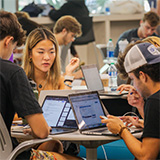
The Heart of Learning
100%
6 Strategies
26 Tactics
= Learn how these tactics align with the United Nations Sustainable Development Goals